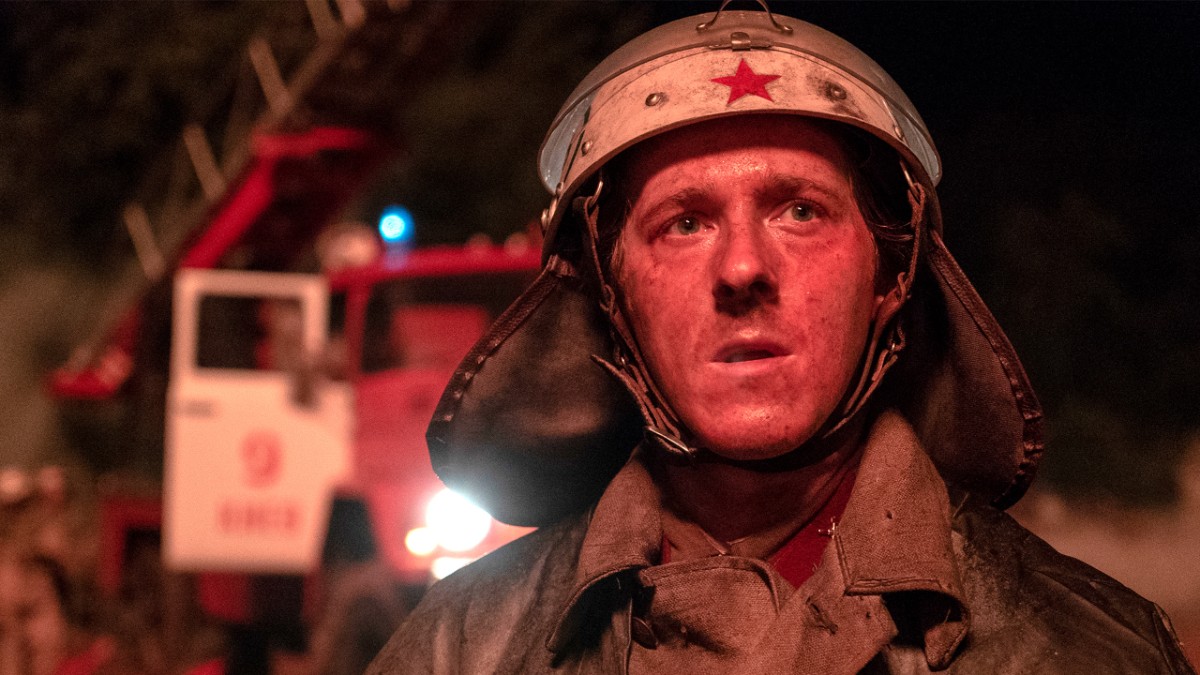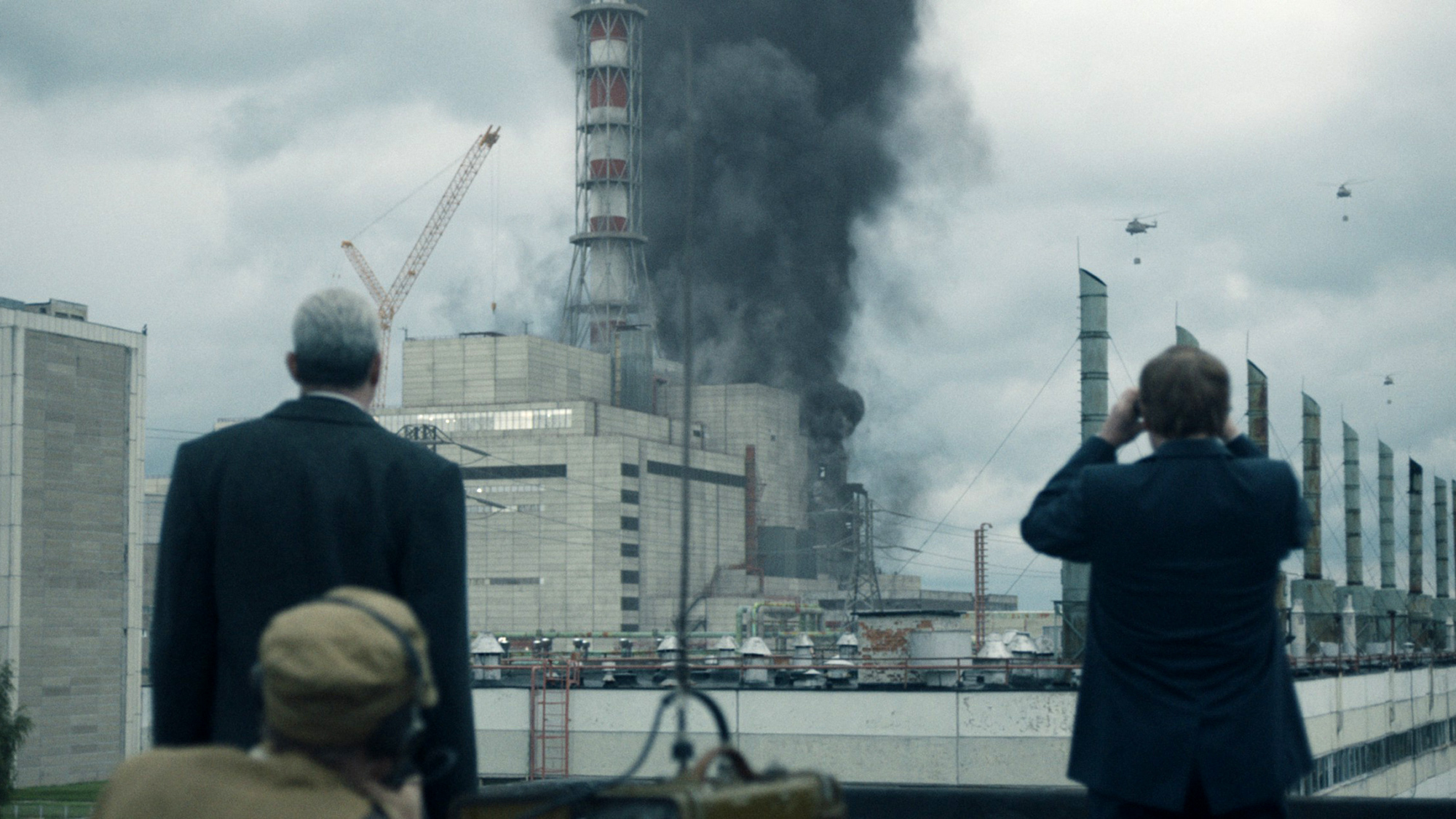When Chernobyl Blew, They Dumped Boron and Sand into the Breach. What Would We Do Today?

In the second episode of "Chernobyl," the HBO miniseries about the 1986 accident that became the worst nuclear power disaster in human history, the situation is pretty bad. A large fire rages in the ruins of the No. 4 reactor of the Chernobyl Nuclear Power Plant. A hospital in the nearby town of Pripyat is overrun with radiation victims. Deadly radioactive dust has drifted all the way out of the Soviet Union and into Sweden. The air above the reactor literally glows where the uranium core has become exposed. And the people leading the disaster response decide to dump thousands of tons of sand and boron on the core.
This is more less what happened during the actual disaster in April 1986. But why did first responders use sand and boron? And if a similar nuclear disaster were to occur in 2019, is this what firefighters would still do?
You really don't want an open-air fire on an exposed nuclear core
Exposing a burning nuclear core to the air is a problem on at least two levels, as nuclear reactor engineer and University of Illinois at Urbana-Champaign professor Kathryn Huff told Live Science. [5 Everyday Things that Are Radioactive]
Your first problem is that you've got an ongoing nuclear-fission reaction. Uranium is firing off neutrons, which are slamming into other uranium atoms and splitting them. Those uranium atoms are releasing yet more energy and feeding the whole hot mess. This reaction, no longer contained, is also spewing incredible levels of direct radiation, posing a mortal danger to anyone who tries to get near it.
Your second, related — and much more serious — problem is that the fire is releasing lots of smoke and dust and debris into the air. All that gunk is coming right out of a nuclear reactor, and some of it is in fact matter straight from the nuclear core. That includes an assortment of types (or isotopes) of relatively lightweight elements that form when uranium atoms split.
"This is the dangerous part of an accident like this," Huff said. "Those isotopes, some of them, are toxic to humans. And some of them are more radioactive than what you would encounter in your day-to-day life. And some of them, in addition to being quite toxic and radioactive, are very mobile in the environment."
Mobile, in this case, means that those isotopes can enter the bodies of living things to cause problems. Take, for example, iodine-131, a radioactive isotope of iodine that living cells treat just like regular iodine.
Get the world’s most fascinating discoveries delivered straight to your inbox.
A smoke plume like Chernobyl's contains lots of iodine-131, which can drift hundreds of miles. It can end up in rivers and make its way into plants, animals and humans. Our thyroid glands rely on iodine and will absorb iodine-131 just like ordinary iodine, creating a long-term source of serious radiation inside our bodies.
(This is why, in the immediate aftermath of nuclear disasters, people in the impacted area are supposed to take iodine pills, to fill up their body's reserves and prevent their thyroids from absorbing any of the radioactive isotopes.)
Sand and boron
Dumping sand and boron (the actual Chernobyl mixture also included clay and lead) is an attempt to solve both the first and second problems.
The sand smothers the exposed reactor, squelching that deadly smoke plume. And the boron, in theory, could squelch the nuclear reaction.
"In a nuclear reactor, there are isotopes that make the reaction go and isotopes that make the reaction slow," Huff said.
To get a nuclear chain reaction going, she explained, you need to get enough radioactive isotopes close together that their neutrons, firing wildly into space, tend to slam into other atomic nuclei, splitting them. [Infographic: Chernobyl Nuclear Disaster 25 Years Later]
"When a neutron interacts with an isotope, there's a certain probability, due to the structure of its nucleus, that it will absorb the neutron," she said. "Uranium, specifically uranium-235, has a tendency to absorb the neutron and then immediately split apart. But boron tends to just absorb the neutron. Due to its nuclear structure, it's sort of neutron-thirsty."
So, dump enough boron onto the exposed reactor No. 4 core, the theory went, and it would absorb so many of those wildly firing neutrons that the reaction would stop.
In Chernobyl's case, however, dumping the boron and other neutron absorbers onto the reactor turned out not to work, in part due to the ad hoc helicopter-dumping approach that the plant's design necessitated.
"The intense radiation killed several pilots," the BBC reported in 1997, adding, "It is now known that, despite those sacrifices, almost no neutron absorbers reached the core." [5 Weird Things You Didn't Know About Chernobyl]
Still, Huff said, the principle the Soviets used — neutron absorbers to stop the reaction, coupled with materials to knock the radioactive isotopes out of the air — was sound. And in the event of a similar disaster today, response teams would take an approach based on the same underlying theory.
The big difference, she said, is that modern nuclear plants (at least in the United States) are designed to do a lot of that work themselves.
Modern reactors are way more safe and much more prepared for problems — but they still use boron in their emergency handbooks
Huff pointed out at length that U.S. (and other properly advanced) nuclear reactors are much less likely than Chernobyl to encounter any sort of disaster — never running as hot and operating in sturdier vessels. And the buildings themselves are designed to do much of the work to squelch a nuclear reactor fire and a radioactive plume, she added.
Modern reactors are outfitted with chemical sprays that can flood a reactor building, knocking radioactive isotopes out of the air before they can escape. And unlike Chernobyl, nuclear facilities in the U.S. are entirely contained in sealed structures of cement and rebar (a mesh of reinforced steel bars). These sealed shells are over-engineered to the point that, in theory at least, even a significant explosion wouldn't breach them. You could crash a small jet into the side of one of these buildings, and it wouldn't expose the core. In fact, as part of a test, the U.S. government did just that to an empty containment vessel in 1988. The NRC states that studies regarding large jet impacts are still ongoing.
All that makes a Chernobyl-scale disaster unlikely, though the Union of Concerned Scientists writes that smaller (but still-dangerous) radiation leaks are a real threat for which the United States is not adequately prepared.
That said, the U.S. Nuclear Regulatory Commission (NRC) has, for every one of the 98 nuclear power reactors operating in the country, drafted emergency handbooks hundreds of pages long. These lay out instructions for what responders should do in the event of all sorts of somewhat-plausible to highly unlikely emergencies).
Those handbooks are available in plain English on the NRC's website. Here's the one for Palo Verde, a large plant in western Arizona. You can find instructions for when to shove lots of boron into the core (as soon as the reactor fails to shut down normally). It saw what to do if hostile forces attack the plant (among other things, start preparing a regional evacuation the moment it becomes clear that the forces might cause a significant radiation leak). And, in the event of significant amounts of radioactive material escaping into the atmosphere, it says who declares an evacuation (Arizona's governor, based on recommendations from site supervisors).
Those plans don't go into great detail about Chernobyl style events, though since 9/11 the NRC has developed guidelines for more extreme disasters. However, Huff said, fighting a fire on an exposed uranium core will always come down to more or less fancy versions of dumping boron and sand.
- The Most Massive Numbers in Existence
- The Biggest Unsolved Mysteries in Physics
- What's That? Your Physics Questions Answered
Originally published on Live Science.




